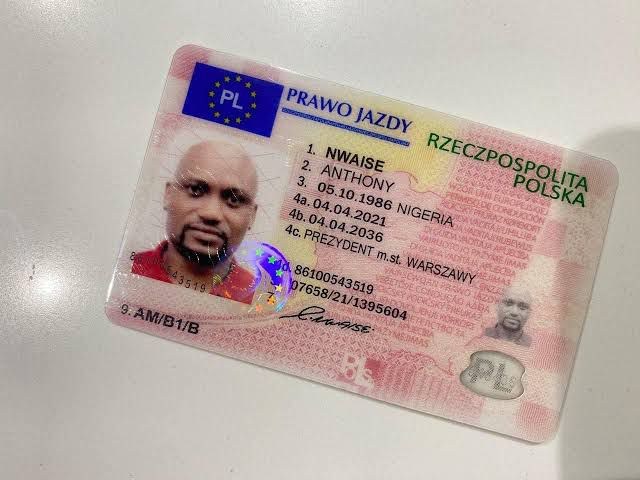Understanding Driving Licenses: Types, Requirements, and Frequently Asked Questions
Driving is a fundamental aspect of modern life, and obtaining a driving license is a vital milestone for numerous individuals. This post checks out the various types of driving licenses readily available, the requirements to get them, and responses frequently asked concerns related to the subject. An educated point of view on driving licenses can assist people understand the importance of choosing the right type of license to satisfy their needs.
Types of Driving Licenses
Driving licenses can vary between nations and regions, however they generally fall into numerous significant categories. The following table sums up the most typical types of driving licenses, including their purposes and typical restrictions.
| Type of License | Description | Typical Restrictions | Eligibility Age |
|---|---|---|---|
| Learner's Permit | Permits beginner chauffeurs to practice. | Must drive with a certified grownup. | 16-18 years old |
| Class C License | Standard license for traveler lorries. | No restriction on number of passengers. | 18 years or older |
| Class A License | Industrial license for big lorries. | Need to abide by stricter guidelines. | 21 years or older |
| Class B License | For driving buses and bigger vehicles. | May need unique recommendations. | 21 years or older |
| Motorbike License | For operating motorbikes. | Should use a helmet; differs by state. | 16-18 years old |
| International License | Enables legal driving in foreign nations. | Must have a legitimate domestic license. | 18 years or older |
Student's Permit
The student's license is the primary step for many individuals venturing into the world of driving. This authorization allows novice chauffeurs to practice driving under supervised conditions, generally needing a certified grownup over a certain age to accompany them in the lorry.
Class C License
The Class C license is the most typically held driving license, allowing people to run standard guest automobiles. This license normally has actually less limitations compared to other classifications.
Class A and B Licenses
Class A and B licenses are essential for operating commercial automobiles. These licenses require special training and screening, guaranteeing that motorists are geared up with the skills required for navigating bigger and more complex automobiles securely.
Motorbike License
Individuals interested in riding bikes should obtain a motorbike license, which can require additional training and testing. Safety gear, such as helmets, is typically mandated by law.
International License
A global driving license makes it possible for people to drive in foreign nations, but it is vital to have a valid domestic driving license in combination with the global permit.
Requirements to Obtain a Driving License
The requirements for getting a driving license can vary considerably by jurisdiction. Nevertheless, there are just click the next webpage and criteria that the majority of applicants will experience. Below is a list of basic requirements:
Age Requirement:
- Minimum age differs; student's permits are typically issued at 16, while complete licenses may need applicants to be 18 or older.
Vision Test:
- Most jurisdictions need candidates to pass a vision test to ensure safe driving abilities.
Composed Test:
- New motorists must pass a composed exam that covers traffic laws, roadway indications, and safe driving practices.
Driving Test:
- Practical driving tests are conducted to demonstrate an applicant's capability to run a car safely under different conditions.
Costs:
- Payment of application and screening costs is usually needed.
Evidence of Identity:
- Applicants must offer valid identification, such as a passport or birth certificate, in addition to proof of residency.
Parental Consent (for minors):
- Parental or guardian authorization is frequently required for applicants under the age of 18.
Comprehending the various types of driving licenses and their associated requirements is crucial for anybody seeking to drive lawfully and securely. Each license serves a distinct purpose, accommodating various driving needs, from basic automobiles to business transport and motorcycles. By fulfilling the necessary criteria and adhering to guidelines, aspiring motorists can enjoy the flexibility of driving while guaranteeing their safety and the safety of others.
Regularly Asked Questions (FAQs)
What do I require to bring when obtaining a driving license?
- You normally require to offer identification, evidence of residency, and any essential application costs. Consult your regional DMV or licensing authority for particular requirements.
How long does it require to acquire a driving license?
- The timeline can vary based on individual situations, such as how quickly one can complete the required tests, and whether there is a backlog at the licensing authority.
Can I drive with a learner's authorization?
- Yes, but you must be accompanied by a certified motorist and abide by restrictions set by your local laws.
What occurs if I stop working the driving test?
- You usually have the option to retake the test after a designated waiting period, which differs by jurisdiction.
Is it essential to take a driving course?
- While not constantly mandatory, taking a driver's education course can be useful and is frequently required for people looking for a student's license.
By being informed about the kinds of licenses available, the requirements essential for getting one, and the related regulations, potential drivers can browse the process of acquiring a driving license with self-confidence.

